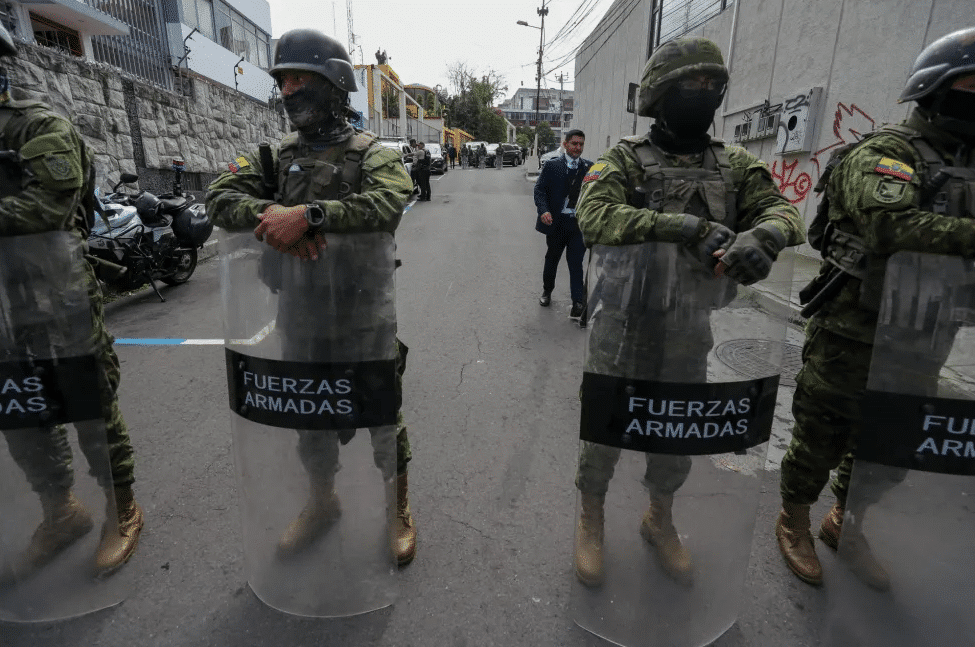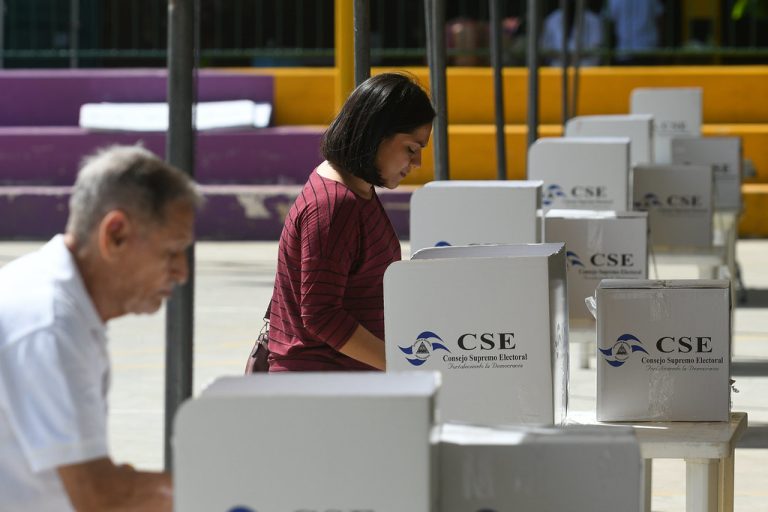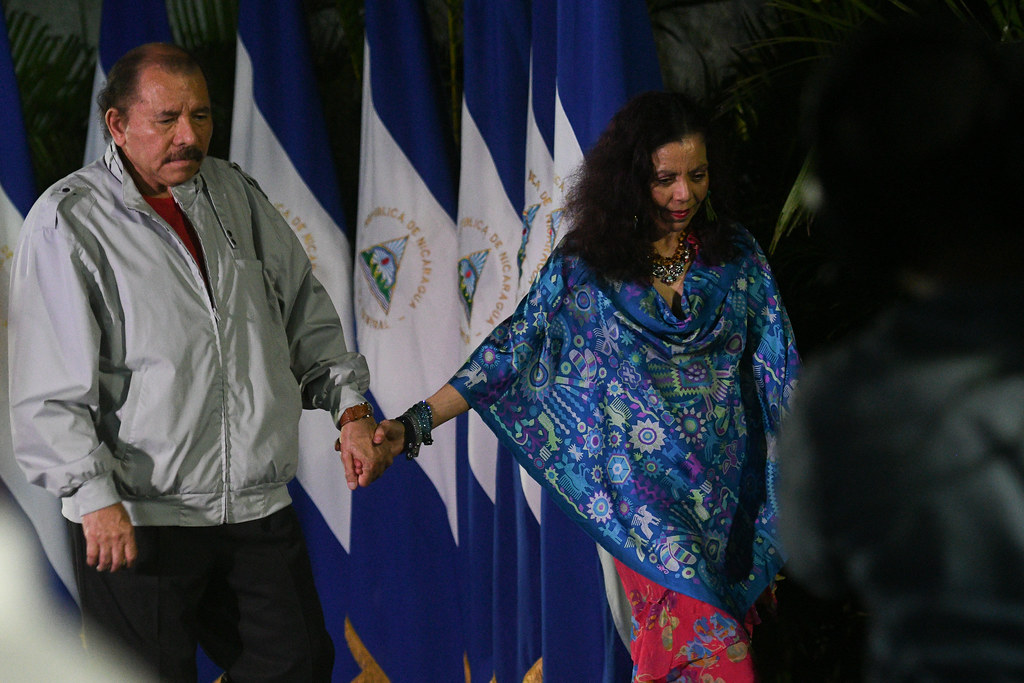4 de septiembre 2020

The Return of the Military

PUBLICIDAD 1M
PUBLICIDAD 4D
PUBLICIDAD 5D
The National Opposition Union was formed as an electoral alliance, and not as a political alliance. Before taking office, they were already breaking up

History teaches those who want to learn about elections. This is a debrief on how Daniel Ortega has managed to stay in power thanks to the ballot box trap.
One of the keys to the electoral victory of the National Opposition Union (UNO) over the Sandinista Front (FSLN) in 1990, was its ability to register and participate with a name and a “ballot box” that equally sheltered all the political parties that comprised it.
Let us remember that UNO was formed by fourteen political groups, including conservatives, socialists, Christian socialists, liberals, and social democrats. Even the communist party made the list.
By participating together, under an umbrella that covered them all, without belonging to anyone, made it easier for them to elect Violeta Barrios de Chamorro, who was not a member of any party, as a candidate, and coexist in the electoral campaign.
This way, citizens who opposed the FSLN were able to pour their votes into a single funnel. It simplified things to a symbolic level, where the red and black flag, and the blue and white flag, faced each other.
UNO was configured as an electoral alliance and not as a political alliance, to the point that when they triumphed on February 25, and before taking office on April 25, they were already breaking up. These bitter struggles served the conditions that made the Sandinista slogan “To govern from below” possible, on a platter.
So, why reminisce? Because History teaches those who want to learn.
Ortega was the first one to learn this lesson: in the political pact that he made with former president Arnoldo Aleman, one of the agreements was to eliminate the possibility for electoral alliances to register under their own name. The caudillos, determined to impose bipartisanship, established that any electoral alliance should be formed around a political party, bear the name of that party and abide by its rules.
They knew the idiosyncrasies of Nicaraguan politicians very well: “El que tiene más galillo siempre quiere tragar más pinol” (freely translated as: Those who have bigger throats, always want to swallow more).
That provision is one of the sharpest knives in the electoral law. Many heads rolled under its gash.
When the guillotine was already in force, eight political groups decided to form a coalition that they named “Tercera Vía” (Third Way), in an attempt to break the Aleman-Ortega axis. A first dilemma was to select a party that would lead the alliance, and the one that aroused the least distrust was chosen: The Nicaraguan Democratic Movement (MDN).
The electoral law required the collection and presentation of signatures for the equivalent of 3% of the electoral roll. Allies collected 86,000 signatures, comfortably exceeding the minimum required. But, once presented to the CSE (Supreme Electoral Council), the leaders of the MDN made an aggressive move and kept the package. The attempted alliance ended there. Ironically, when the magistrates of the pact passed the guillotine, they cut off everyone’s head, including the MDN.
Only the Conservative Party (PC), Camino Cristiano, and, of course, the pactist parties survived. Again, a good part of the anti-pact political groups tried to form an alliance with the PC. The presidential formula was integrated by Noel Vidaurre, as a presidential candidate, and doctor Carlos Tunnermann as a candidate for the vice presidency.
One fine day, Vidaurre, Tunnermann, and José Antonio Alvarado, who was also a leader of the alliance, announced their resignation with the argument that the leaders of the PC wanted to have it all. Vidaurre declared to the media: “We tried with all our might to create a vast alliance that could triumph under the green flag. We did everything we could and was within our reach to create a universal ballot box”. The alliance ended there.
In 2006, Eduardo Montealegre broke relations with the PLC, and Herty Lewites ended relations with the Sandinista Front. Both announced their presidential candidacies. The pactists responded to the harassment in an attempt to inhibit them. This time, the response from the liberals and the Sandinistas was to join forces, even organizing and participating, together, in street demonstrations. Finally, they managed to neutralize the pactist attempt.
Then, Ortega followed a more cunning route. Herty wanted a ballot box that did not bear the Sandinista surname, so the Frente set up an ambush with an old operator who had received a “party” of evangelical inspiration as a gift. The undercover agent offered all this and heaven too, and Lewites took the bait. In fact, a press conference had already been called to announce the decision to participate with the evangelical party. However, at the last minute, the members of the campaign committee received evidence of the ambush and aborted the Orteguista operation. This is how Herty appeared as the candidate for the MRS.

Daniel Ortega and Rosario Murillo walk together on the day of the presidential elections, in 2016. Photo: Carlos Herrera | Confidencial
Another alliance was formed under the slogan “Everyone against Ortega”. They chose the PLC ballot box. And there they went again, together, conservatives, resistance, liberals. Even the MRS campaigned with this alliance. So that we have an idea, the candidate for vice mayor of Managua was Enrique Quiñónez, and the legal representative was Wilfredo Navaro. The outcome should then not surprise us: Alemán shared the mayoralties with Ortega, and left Eduardo Montealegre hanging without the mayoralty of Managua.
The dilemma of the ballot boxes was repeated. That year, a broad alliance was formed under the name of Unidad Nicaragüense por la Esperanza (UNE), whose presidential candidate was Fabio Gadea. Again, the dilemma of the ballot boxes. One of the options was represented by no other than Enrique Quiñónez.
The ambush was mounted once again. Providentially, the Independent Liberal Party ballot box was chosen and the alliance was able to participate, but Ortega already controlled the electoral scaffolding and stole the elections with impunity. But this was not enough: in 2016, he cut off the head of the PLI and prevented it from participating in the elections that year.
The reality is that the bottom line of the struggles in the National Coalition is the issue of the ballot box, that is, who will have the upper hand. For those who can read, the lesson that these episodes leave us with, in today’s Nicaragua, with today’s conditions and today’s political actors, is that as long as the participation of electoral alliances with their own name is not a possibility, any Alliance will always be in trouble, because the party that leads the alliance will have the upper hand, or because Ortega intervenes by forcing their hand.
This article has been translated by Ana Maria Sampson, a Communication Science student at the University of Amsterdam and member of our staff*
Archivado como:
PUBLICIDAD 3M
Economista y abogado nicaragüense. Aficionado a la historia. Bloguero y conductor de la plataforma de comunicación #VamosAlPunto
PUBLICIDAD 3D